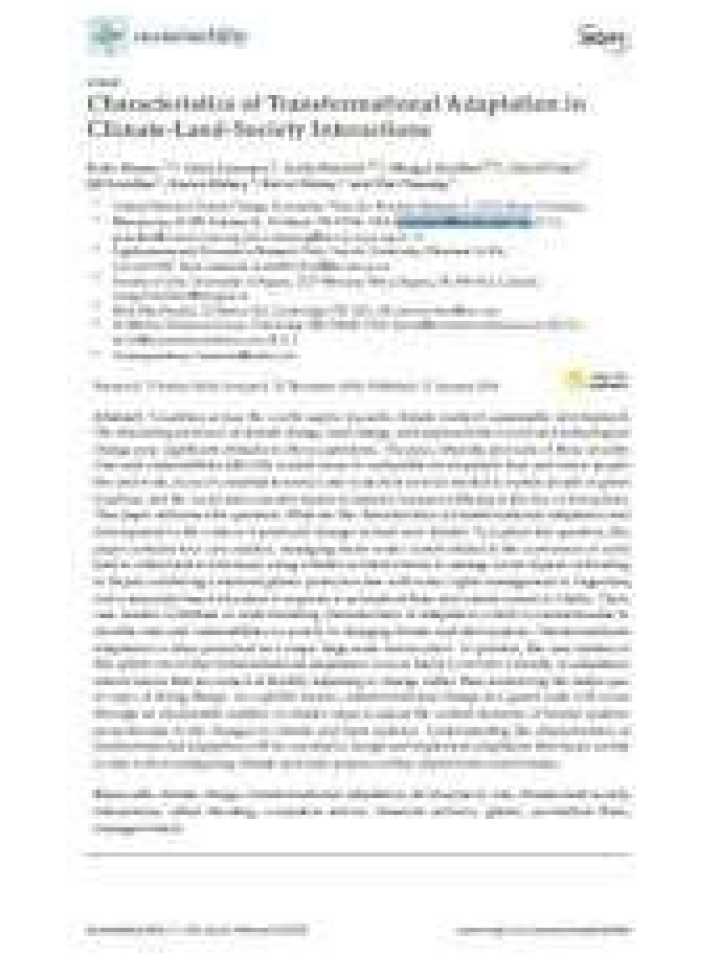Characteristics of transformational adaptation in climate-land-society interactions
This paper addresses the question: What are the characteristics of transformational adaptation and development in the context of profound changes in land and climate? To explore this question, this paper contains four case studies: managing storm water runoff related to the conversion of rural land to urban land in Indonesia; using a basket of interventions to manage social impacts of flooding in Nepal; combining a national glacier protection law with water rights management in Argentina; and community-based relocation in response to permafrost thaw and coastal erosion in Alaska.
These case studies contribute to understanding characteristics of adaptation which is commensurate to sizeable risks and vulnerabilities to society in changing climate and land systems. Transformational adaptation is often perceived as a major large-scale intervention. In practice, the case studies in this article reveal that transformational adaptation is more likely to involve a bundle of adaptation interventions that are aimed at flexibly adjusting to change rather than reinforcing the status quo in ways of doing things. As a global mosaic, transformational change at a grand scale will occur through an inestimable number of smaller steps to adjust the central elements of human systems proportionate to the changes in climate and land systems. Understanding the characteristics of transformational adaptation will be essential to design and implement adaptation that keeps society in step with reconfiguring climate and land systems as they depart from current states.
Explore further
